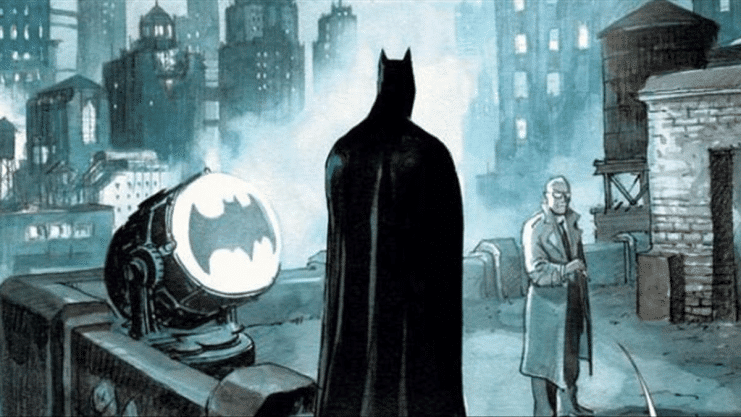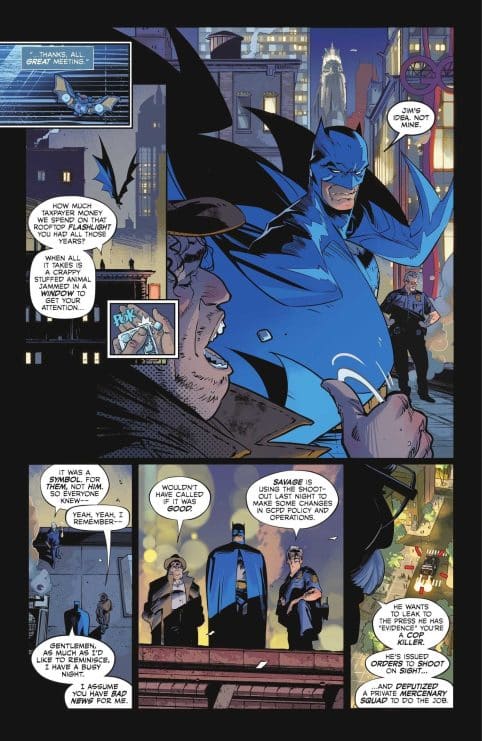

The Dark Knight says goodbye to the Bat-Signal with a replacement as absurd as it is brilliant


Batman and the end of the Bat-Signal
The series Matt Hamlet Yes Jorge Jimenez he made it clear from the beginning that that was his goal modernize the mythology of the Dark Knight. In just three issues, they returned Alfred in the form of hologram with artificial intelligencethey transformed the Batmobile in an electric car and they completely redesigned Batman’s costume. But what happened with the Bat-Signal was the most revolutionary thing so far.
In Batman #3Him Commissioner Gordon call the investigator Harvey Bullock to ask him to “turn on the signal”, as he needs to contact Batman to talk about it Savage vandal. What follows is a moment as unexpected as it is funny: Bullock pulls a bat plush and puts it in the window.
A new symbol that disconcerts the fans
Shortly thereafter, the three – Batman, Gordon and Bullock – meet on a rooftop, where Harvey himself mocks the hero:
“How much public money did we spend on that giant light bulb you’ve had for years? When was enough a cheap stuffed animal stuck to a window so that you appear…”
Batman doesn’t answer, but Gordon reminds him of the symbol’s true meaning: “The Bat-Signal was for them, not for you.“
A phrase that contains the heart of the myth: the signal was not only used to call the bat, but to give hope to Gotham.


From symbol of justice to urban joke
THE Batseñal debuted in 1942In Detective Comics #60and became one of the most recognizable elements of the DC Universe. That it disappears now, 83 years later, is not a simple idea of the screenwriters: it is part of the new status quo that the city is experiencing.
At this stage, Savage vandal – yes, the immortal villain who has been plotting for centuries – has become the Gotham’s new police commissioner. His first measurement was break the alliance between Batman and the policeprohibiting any contact. So Gordon and Bullock had to look a more discreet alternative to communicate with the hero.
And so was bornbat-Pelches”.
A change with more meaning than it seems
Although it may seem like a joke, the gesture has a symbolic meaning. The Bat-Signal depicted an official link between Batman and the law; eliminate it he reflects a more corrupt, more broken, and more lonely Gotham.
The stuffed animal, however, represents the resistance of the few allies who still believe in hima way of saying: “even if they take away our electricity, we will continue to call you”.
Furthermore, this change connects to Fraction and Jiménez’s vision: a Batman who operates from the absolute shadowmore vigilante than public figure, in a city where symbols have been stripped of power.


Between satire and homage
The scene works as much as social criticism —on public spending and absurd bureaucracy—as humorous tribute to the character’s past.
Jiménez himself, responsible for the spectacular graphics of the issue, adds an almost self-parodic touch: Batman observes the ridiculous stuffed animal in the window with a mixture of seriousness and resignation.
The fans reacted with surprise, but also with enthusiasm. Many point out that this reinvention of classical elements is reminiscent of what he did Grant Morrison with Batman Incorporated or even to what Frank Miller grown inside The return of the Dark Knight: a Gotham that changes, but where Batman always finds a way to adapt.
The new era of the Dark Knight
Against Batman #3DC didn’t just turn off the Bat-Signal; ah started a new phase for the character. Matt Fraction and Jorge Jiménez are proving that it can be done honor history by reinventing the mythand if that means replacing a lightbulb with a stuffed animal, it looks like Batman and Gotham are ready to have a little laugh at themselves.
Batman #3 is now available at DC Comics stores and digital platforms.

